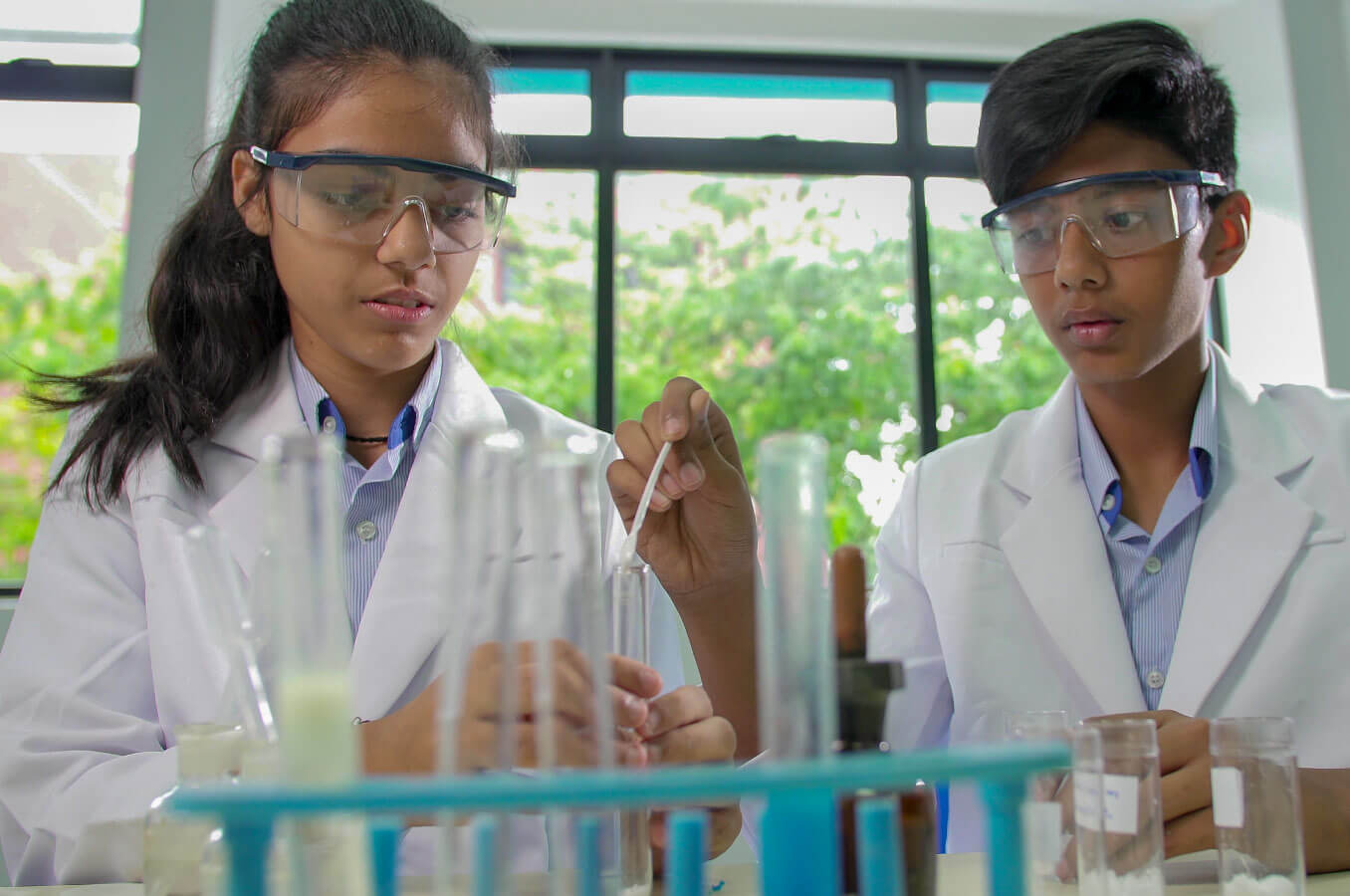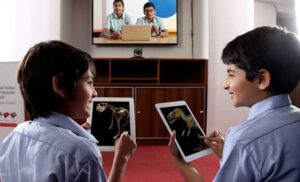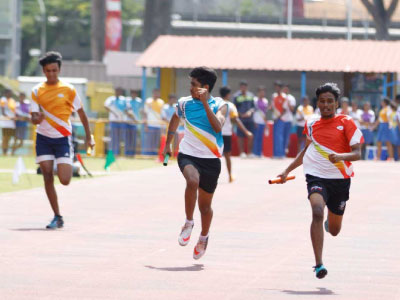Download our FREE Academic Calendar now! 📚 Start your child’s journey to success.
You are unique because of the distinctive design on each finger!
Isn’t it wonderful how unique each fingerprint is? They will examine and observe their own distinctive print throughout the preschool science exercise.
Fun classroom activities involve fingerprinting in kindergarten schools in Noida. Children adore learning about the science of fingerprint identification, or dactyloscopy. The students will remain happy by cataloguing their own prints, examining others, and even working on imaginative art projects.
What is fingerprint activity for kids?
A fingerprint is a trace that is left behind when an object is touched by the ridges on the fingers, hands, toes, or feet. Students create a collection of direct fingerprints using distinct methods in this project, where they also discover their own friction ridge patterns.
Benefits of fingerprint activities for Children
Sensory learning
Playing is how children learn and develop in all of its forms. Depending on the activity, the youngster will learn a different thing specifically. Kids Learning claims that finger painting is crucial for children’s sensory development. The five fundamental senses are being learned by the organism through a process known as sensory integration. The two main senses that kids are emphasising with this activity are touch and sight.
Fine motor skills
Young children’s fine motor skills are still being developed, so finger painting is a terrific approach to help them. Every component of their hand and wrist gets a modest workout when they paint with their fingers. They are attempting to extend their fingers, pinch something, and rotate their wrist. They will be able to strengthen their fine motor abilities thanks to all of these activities.
Self-expression
Your kids will learn how to express their emotions visually when they paint. You can instruct your youngster to select the hue that best expresses their current state of feeling. For instance, if the kids are furious, they might choose red, or if they’re pleased, they might choose green, etc. Children are more inclined to talk about their feelings and learn how to control them once they have put their sentiments on paper.
Hand-eye coordination
Even though finger painting seems quite simple, it actually demands a number of complicated hand movements that help to build pre-writing abilities and strengthen the hand and finger muscles. Additionally, this exercise enhances hand-eye coordination and abilities like proper pencil grip, picture colouring, paper cutting, and paper folding. These abilities will also help kids with regular tasks like tying shoes and buttoning garments.
Promotes intellectual growth
Children are exposed to colours, self-identification, discovery, experimenting, and mixing through finger painting, all of which have favourable benefits on their cognitive growth and thinking abilities. They constantly have a number of topics on their minds as they control objects, move through space, and consider colours. Children learn how to use both sides of their brains concurrently through finger painting, which develops both.
Encourage creativity and imagination
The fact that kids enjoy finger painting is one of its main advantages. It entails drizzling paint onto fingers, which are then used to draw with on a piece of paper. It sounds so chaotic, But being messy is fun. Children’s creativity and independence are so sparked by playing with colours, patterns, and the squishy texture of paint. Children have the chance to enjoy this activity even if they don’t have a particular flair for painting because they can concentrate on the process rather than the finished product.
Language and speech development
After finishing a finger painting, you can get the kids to talk about it. They could discuss the many colours they used or the various items they tried to make, for instance. Additionally, finger painting gives children a method to communicate their emotions visually rather than verbally, which promotes language development.
Fingerprint Activities Ideas for Pre-schoolers and toddlers
Animal Fingerprint Art
Make a range of different creatures with your next entertaining fingerprint craft. Your children will love creating their own little fingerprint zoo.
Craft – Fingerprint Poppies
Are you seeking for creative suggestions for an art and craft show? This toddler-friendly poppy fingerprint art is a wonderful way to involve the kids.
Bluebonnets with paw prints
Making these adorable bluebonnets out of fingerprints is a lot of fun. It’s always entertaining to see where your child’s imagination takes them with kids art ideas.
Glass magnets with fingerprints
If you want to create some fingerprint art to give to your best friend, using these magnets is a terrific pastime. These lovely fingerprint magnets on their cabinets would be adored by your bestie.
Reindeer Ornament with Fingerprints
Fingerprints can be used to create a sweet reindeer and beautiful handcrafted ornaments. This year, these will look lovely hanging from your Christmas tree.
Keychain with Fingerprint Heart
This heart keyring doesn’t let me down—I enjoy utilising thumbprint art as ideas for gifts for parents who live far away. With some simple children’s art, their parents may now take a piece of them with them everywhere they go.
Fish aquarium with fingerprints
Everyone will adore the variety of fingerprint-related activities available. What entertaining crafts you can do with your kids is demonstrated by these fingerprint fish in an aquarium or fish bowl.
How do Fingerprint Activities help a child’s social development?
Your kids can express their feelings or emotions through finger painting. They are able to communicate without using words by using various colours. Children can learn while having fun and excitement while finger painting.
Also Read :Good Manners for Students in School
Conclusion
In conclusion, finger painting is a very healthy activity for both children that should be conducted in preschools in Noida. The task can be completed both individually and in groups.
FAQs
What do children gain from Fingerprint Activities?
Ans – It enables children to be imaginative and creative. It promotes the growth of the mind. It improves hand and finger strength, which benefits fine motor skills.
What is fingerprint analysis for kids?
Ans – Fingerprint analysis can reveal hidden talent and behavioural traits. Thanks to developments in the study of dermatoglyphics or the analysis of fingerprints, a child’s future may become better planned. A young age could also be used to identify potential deviant tendencies.
What are some fun facts about fingerprints?
● Dermatoglyph is the term used to describe fingerprints in science.
● Twins that are identical have unique fingerprints.
● Some people lack fingerprints from birth.
● Fingerprints can be used for basic paintings for kids.
Is fingerprint activities help in motor skill development in kindergarten?
Ans – Young children’s fine motor skills are still being developed, so finger painting is a terrific approach to help them. Every component of their hand and wrist gets a modest workout when they paint with their fingers. They are attempting to extend their fingers, pinch something, and rotate their wrist. They will be able to strengthen their fine motor abilities thanks to all of these activities.
What skills do children learn from fingerprint activity?
Ans – They will adore the tactile aspects of this exercise, which is ideal for fostering the development of both social and fine motor abilities. Each student in your class will have developed a unique set of fingerprints, which they may compare to determine how distinctive and wonderful each one is.





































